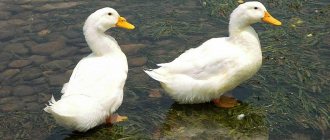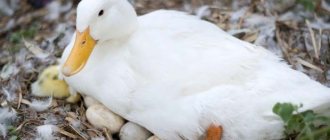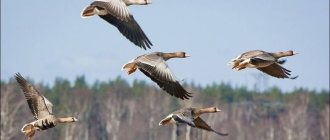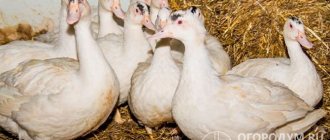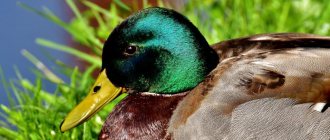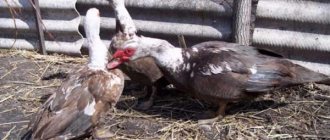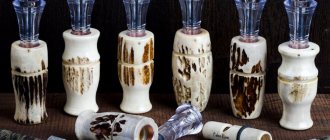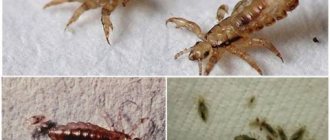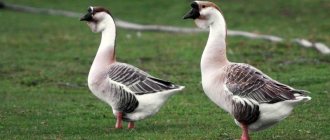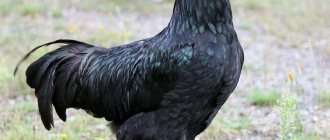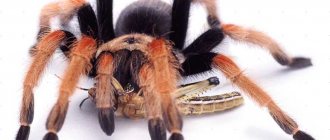Among farmers, meat breeds of ducks are always more popular than species bred for laying eggs. This is due to the fact that, among other things, you can get high-quality feathers and down from them. Meat ducks also lay eggs. Also, when slaughtering meat birds, their liver is stored, which is used to prepare expensive dishes. Selling these products will allow you to make a decent profit, but first decide which breed of ducks you should choose for breeding. We will help you make your choice.
Ukrainian gray
Meat poultry, which is considered one of the best breeds of this type. The breed was bred by Ukrainian breeders.
Description. Birds have a wide muscular body, a powerful physique and fragile bones. The beak is dark, slightly concave. The animals have thick plumage, similar in color to that of their wild counterparts. Specimens with clay or white plumage are usually found.
Productivity. The little ducklings grow and develop well and gain weight quickly. Already at 2 months the weight of birds reaches 3.5-4 kg. Over the course of a year, one hen produces up to 120 large eggs weighing 85-90 g.
Content. Ducks of this breed are able to fully develop on grazing and independently obtained duckweed alone. The breed can be kept in unheated poultry houses. The main thing is to provide thick bedding and protect the house from drafts.
Advantages. Good productive performance, increased resistance to low temperatures and bird diseases. They also distinguish early maturity, intensive growth, and a high survival rate of chicks.
Flaws. The birds are unclean and also noisy.
Nutrition
In order for a duck to have a healthy weight and produce a large number of eggs, you need to know exactly what you can feed domestic ducks. The bird does not require exquisite dishes, since it is accustomed to eating modestly. To feed them, you can pour grain, mixed feed or mixed products.
It is important to pay attention to the inclusion of grass in the diet of ducks, since it is simply necessary for the birds (should make up twenty percent of the total diet). Also ensure access to clean drinking water
Here is a more detailed feeding algorithm:
- 50% of a duck's diet can be corn, oats or wheat.
- 10% can go to ground legume products such as peas.
- The duck can be given bran (no more than 20%), beer cake or yeast (no more than 3%).
- During the summer, ducks must eat plants such as duckweed. One individual can eat 0.5 kg of plants.
- 20% can be ground beets, and 10% can be salted carrots.
Thanks to compliance with dietary standards, ducks will feel good and behave actively.
Russian Crested
The main feature is the crest on the head. Some people notice that the larger it is, the lower the productivity indicators.
Description. The Russian Crested Duck has a medium-length body and a strong build. Well developed muscles. The back is wide, slightly convex, the chest is rounded. There are no folds on the lush belly. There are specimens with a pure white color, and there are also multi-colored birds: they have thick feathers that fit tightly to the body. Ducks have long wings and an elongated, rounded head. Brown eyes and concave beak.
Productivity. The weight of ducks reaches a little more than 2 kg, drakes weigh about 3 kg. They have tender, juicy and tasty meat. Over the course of a year, one hen produces about 55 white or greenish eggs weighing up to 70-80 g.
Content. Ducks are unpretentious in their diet and are comfortable with water bodies. It is not recommended to overfeed them, as birds are prone to obesity. The room where birds are kept must be clean and dry, otherwise the animals may suffer from diseases.
Advantages. Birds are unpretentious in maintenance and nutrition. Characterized by high productivity and rapid growth.
Flaws. Low weight of Russian ducks.
Expansion of area, bedding, light
- As the ducks grow, the housing area is expanded; by the age of 1 month, birds are subject to the norms for mature birds - 3 heads per 1 m2. It is necessary to ensure that the floor in the room is clean and warm, so that there are no drafts.
- For bedding, use straw or sawdust. Large shavings do not absorb moisture well, so they are used for nests of mature birds. The litter is replaced after 2 days or according to the degree of contamination, this is influenced by the population density.
- The lighting day for young ducks is equal to a day in the 1st week, in the 2nd week the interval is reduced to 17 hours, and with the onset of the 3rd week, the light for young ducks can be reduced to 12 hours a day. The light intensity in 1 week is 20 lm, and subsequently remains at 5-7 lm.
Bashkir
Breed of meat and egg orientation. Farmers of private farmsteads and industrial enterprises especially fell in love with these birds, due to the fact that they feed on almost any food and are able to independently satisfy their needs while walking in a meadow or on a pond.
Description. Ducks have protruding chests and a strong and muscular build. Large, widely spaced paws on short orange legs. The head is flattened on the upper side, located on a short, concave neck, curved outward. A concave orange beak with a wide growth that allows the birds to grab grass. The wings fit tightly to the body. The plumage is black-gray.
Productivity. Adult drakes weigh more than 4 kg, and ducks reach 3.7 kg. There is practically no fat in the carcass. The meat yield is at least 70%. One laying hen produces from 115 to 125 eggs weighing 70-80 g per year.
Content. The bird is unpretentious in care, so it will feel good in special cages and pens. In the room for ducks, it is imperative to maintain an average temperature in winter, and set the optimal temperature in summer - it should not be hot.
Advantages. High survival rate of ducklings - about 80%. Birds also have increased resistance to infectious diseases, grow and develop quickly.
Flaws. Birds need to constantly drink clean water and change bedding, otherwise the animals may be susceptible to disease.
Features of maintenance and cultivation
Large meat ducks reach the desired size only with proper care. The main component is a balanced diet. Keeping birds requires establishing a certain feeding regime. Day-old ducklings are fed boiled eggs with the addition of ground oatmeal. Next, cottage cheese and greens are gradually introduced into the diet. The animal should eat about eight times a day. When an individual begins to actively grow, the number of meals is reduced to three.
Feeding consists of the following components:
- seaweed;
- vegetables;
- greenery;
- fish bone meal.
Even though birds readily eat leftover food, they still require special foods. If you want to breed meat ducks that grow quickly, you must also evaluate the financial side of the issue. In the cold season, they need to be given grain, and not every farmer grows it in their fields. Seasonal purchases are made in advance. There should be enough supplies until warm weather sets in outside. In the spring, the ducks are released to feed freely, but a feeder with grain always remains in the house.
Animals begin to be fattened from the first days. To do this, they are placed in a separate place, away from adults. It will be possible to save offspring if a stable room temperature prevails in the temporary home and the location is not blown by drafts. You can add vitamins and purchased mixtures to the food. How long ducks grow for meat depends on the actions of the owner. Birds also need free space. There are 2–3 individuals per square meter. In this case, they will not feel cramped. If you are fattening animals, this does not mean that they should lead an inactive lifestyle. On the contrary, a good walk promotes appetite.
You need to arrange cozy nests in the barn, because females of fast-growing breeds also lay eggs. Make sure that the pasture does not turn into a swamp during the rainy season. It is better to make the flooring of the poultry house concrete, since other materials tend to absorb liquid. When entering into such a reaction, harmful substances are released, not to mention the smell.
Beijing
From the name it becomes clear that the origin of the breed is Chinese. The bird appeared in Europe in the 19th century and immediately became valuable to many private farm owners. The Peking breed is considered no less popular in Russia.
Description. Animals have special external characteristics. Pekingese have a strong build, broad chest and large back. The large head has a convex forehead and a bright orange beak. The head is located on a small, short neck. The wings have a large span and are well developed. The birds have thick white plumage. Occasionally there are specimens with cream feathers.
Productivity. An adult duck weighs about 3 kg, a drake reaches a weight of up to 4 kg, sometimes more. The young quickly gain weight and already at 2 months the drakes weigh 2.9 kg. During the year, laying hens lay more than 110 eggs weighing about 90 g.
Content. In winter, ducks need to be provided with a special room so that there are no drafts. It is equally important to maintain optimal temperature and lighting. When cold weather sets in, the temperature in the duck house should be at least +10 degrees, in summer - no more than +25 degrees.
Advantages. Early ripening, undemanding to feed, resistance to heat and cold. In addition, there is no need to keep the bird near a pond.
Flaws. Birds have poorly developed maternal instincts; ducks are overly sensitive to excess humidity.
Breeds that are most popular
The best breeds known in Russia and the CIS countries are the Bashkir, Musk, as well as Peking and Ukrainian.
This series also includes blue favorites and mulards. You can read more about the latter in the article “On raising mulard ducks.”
Rarer pets that can be raised are the Black White-breasted, a member of the Rouen breed, specially bred for the meat industry. Also worth a look is the Swedish blue duck.
Musk (indot)
The Muscovy duck comes from South America, where the ancient Indians raised this bird for hundreds of years. In the countries of the former Soviet Union, the Indian duck appeared in the 80s of the last century. The breed allegedly received its name due to the specific aroma of the meat, but contemporaries do not feel anything like that.
Description. The bird's appearance is remarkable. There are bright growths on the top of the head, and it has a narrow beak that curls downward. On the top of the head there are elongated raised feathers; when the bird is frightened or surprised, they puff up even more. Muscovy ducks have blue, gray or brown eyes. The neck is strong and short. The chest is well developed. The back is long and wide. The body is placed almost horizontally. Short legs give it a stocky appearance. Birds come in brown, white, and blue colors. There are specimens with brown and white, black and white with a pattern.
Productivity. Adult males weigh 5-6 kg, ducks - 2-3 kg. At 2 months, the weight of the young reaches 3.8 kg for drakes and 2.2 for females. During the year, laying hens produce 90-100 eggs weighing up to 75 g. Egg products are valuable and healthy.
Content. Birds prefer dry and clean rooms. The poultry house should be spacious and light. Animals are picky about cleanliness for the reason that it affects the laying period. The room temperature is maintained at 18-20 degrees Celsius.
Advantages. Unpretentiousness in nutrition, developed maternal instinct, endurance, ability to live for a long time outside the reservoir.
Flaws. Long-term development and birds’ dislike of cramped conditions and “damp” conditions contribute to the development of diseases.
You can find out exactly what the Muscovy duck breed looks like and how to keep them in the video below:
Caring for young animals
Ducklings show an excellent survival rate.
The algorithm for caring for young animals is simple, but to obtain an excellent result, it must be strictly followed:
- Hatched chicks are immediately transferred from their mother to a separate brooder box, cages, or transferred to a special section for young animals.
- In the first 7 days, lighting in the poultry house is maintained around the clock. On the 8th day, the duration of illumination is reduced by an hour. The break is taken from 24.00 to 01.00. Starting from day 21, daylight hours should be 15 hours. As a rule, from 8.00 to 23.00. When the ducklings are walking, the light can be turned off.
- Bedding made of paper, sawdust or straw should be clean and dry.
- The air temperature in the first 4 days in the brooder is 33-35°C, in the room 29-32°C. On days 5-10 in the brooder 28-33°C, in the duckling house 26-30°C. On days 11-18 22-28°C and 22-25°C. For brooder chicks, the “heating” is turned off on day 19, and the room is heated to 15-17 °C for another three days, if necessary.
- Indoor air humidity is maintained within 65-75%.
- In the first three weeks, 13 ducklings need 1 m² of area, then the density per 1 m² of planting is reduced to 7-8 ducklings.
- Walking time is increased gradually.
If the regime, scheme and diet are followed, the young animals rapidly gain weight and quickly fledge. A special diet and organization scheme has been developed for Blagovarian ducks.
It depends on the age and purpose of cultivation:
- For 1-3 days, ducklings are given only boiled chicken eggs;
- from day 4, low-fat cottage cheese, minced meat or chopped trimmings, chopped green mass, and chalk powder are gradually introduced into the menu;
- on days 10-30, the diet is “diluted” with boiled potatoes, ground grain waste, dairy products, baker’s yeast, river sand or fine gravel;
- when they start going out for walks, the ducklings are given the opportunity to eat worms, insects, and greens;
- young and adult birds must eat duckweed, otherwise the body’s protective functions are reduced and blockage of the digestive tract may occur;
- up to one month of age, puffer babies are fed 7-8 times a day, then transferred to four meals a day;
- upon reaching the age of one month, the ducklings are transferred to moist, not very viscous mash, brewed with broth or dairy products, ready-made grain mixtures, table and fruit and vegetable waste;
- young meat animals are fed “to satiety”, there should always be fresh food in the feeders;
- A special diet is developed for laying ducks; they should not gain excess weight and, at the same time, during the period of intensive laying, weight loss below normal is not allowed.
Blagovarian ducks have a special feeding pattern and diet.
Important. Pukhovychki can be fed with special industrial starting mixtures enriched with a vitamin-mineral complex
Blagovarskaya
Most poultry farmers prefer to breed birds not only to produce eggs and meat products, but also to decorate their farmstead. Blagovarian ducks are just such birds, valued for their tasty meat and external characteristics.
Description. The birds are large in size and have a horizontal, elongated body. A large head is located on a flexible, elongated, short neck. The physique is strong - in appearance the bird resembles a broiler. The voluminous, elongated body with a rounded, developed chest especially distinguishes the bird. The beak is a deep orange hue. The legs are short, widely spaced, with orange or pink paws. The birds have snow-white plumage.
Productivity. The weight of adult drakes reaches 4.4-5 kg, ducks - up to 3 kg. During the year, the laying hen produces about 200-250 large eggs weighing 90-95 g. The shell is white. The fertilization rate of eggs reaches 98%.
Content. In winter, birds need a house to roost at night. The room is equipped with a heating and ventilation system, lighting, nests and feeders, drinking bowls, and windows.
Advantages. Rapid growth and weight gain. The birds have good meat performance and high productivity. The breed has increased resistance to various diseases.
Flaws. In order for birds to be healthy, grow quickly and gain weight, they need to be provided not only with good housing, but also with a balanced diet, which can be expensive.
Breeding goals
Humanity breeds all living creatures for the purpose of obtaining products.
Breeds of domestic ducks have their own classification. Some give meat, others lay eggs, the third group is meat-egg. Meat breed birds have a dense body, quickly gain weight, produce numerous offspring, which are characterized by high survival rate and innate immunity.
The meat has an excellent taste and contains a minimal percentage of cholesterol. In private and farm households in our country you can find different types of ducks.
Pekins and muskies are common and are often confused with turkeys due to the seal on the drake's beak, like a turkey.
There are also other varieties of domestic ducks. The weight of the drake reaches 4 kg, the duck weighs slightly less.
Agidel
When working with these ducks, breeders tried to improve not only egg and meat productivity indicators, but also increase the animals' resistance to diseases and infections. They managed to achieve this.
Description. Ducks are characterized by a deep, protruding chest, a long and wide back, and a well-set and almost horizontal body. The animals have a long and large head with dark, high-set eyes and a wide beak of a white-pink hue. The neck is slightly thickened and relatively long. The body is firmly supported by short legs of a light orange hue. The plumage is white.
Productivity. The breed is valued for its high productive qualities. At the age of 2 months, birds weigh 3 kg. During this period, if the bird is not kept for breeding or keeping eggs, it is sent for slaughter. A duck produces up to 250 large eggs weighing up to 100 g in one season.
Content. Animals do not need permanent poultry houses because they can easily tolerate temperature changes. The only thing that is important to avoid is drafts. There must be a bowl of water in the room so that the birds can moisten their feathers.
Advantages. Agidel ducks quickly gain weight, produce a lot of eggs per year, and have increased resistance to diseases. The taste of meat is especially valued by farmers.
Flaws. Receiving a brood from an incubator due to poorly developed maternal instinct, fatty meat.
Taking care of your health
Before you consider how to succeed in raising ducks, take care to create favorable conditions for their growth. Remember, if even one bird gets sick, the disease will quickly spread to the entire population, which will bring you significant losses. To prevent diseases, you need to follow a number of rules:
- Ducks of different ages should be kept in separate houses.
- If you add onions and garlic to the diet, they will protect birds from ailments such as cholera, typhus and hepatitis.
- Don't skimp on vitamin supplements. Their presence in food ensures not only the health of the chicks, but also contributes to faster weight gain and better quality meat.
- Carefully monitor the cleanliness of the premises and enclosures. Carry out regular cleaning there, do not allow dirt, as it becomes a source of dangerous diseases.
- To disinfect surfaces, use manganese, lime and special disinfectant solutions.
Blue favorite
A breed bred not so long ago - about 20 years ago. Peking duck was used for crossbreeding. At a factory in Bashkiria, breeders selected and crossed ducks for a long time in order to obtain the final positive result. The second name of the bird is Pharaoh.
Description. Blue ducks are considered large birds. At 6 months, the bird is in no way inferior in size to geese of the same age. The Pharaoh has a dense, heavy build, a protruding chest and a long, low-slung body. The neck is strong and of medium length. A wide, large gray beak and large dark eyes. The body is supported by strong, short legs of yellow or gray color. The wings are small and fit tightly to the body. There are specimens with blue, red, gray, white, black and combined plumage.
Productivity. With a balanced diet, birds weigh about 3 kg already at two months of age. The average weight of drakes is up to 5 kg, sometimes 7-8 kg. Females weigh less - about 4 kg. Over the course of a year, one hen produces from 100 to 150 large eggs weighing 80-85 g.
Content. The Blue Favorite is a low-maintenance breed. It is not necessary to equip a special duck pen; a regular pen will be enough for the bird. The animal adapts well to climatic conditions.
Advantages. The Pharaoh has many advantages that make the breed popular for breeding:
- birds have a beautiful appearance;
- animals quickly gain weight;
- Birds produce tasty lean meat.
Flaws. Birds have poorly developed maternal instinct. For this reason, ducklings are hatched only using an incubator or hens of other breeds.
Mulards
Breeders created a hybrid in order to improve the qualities of the parent breeds to obtain a new, improved specimen. For crossing, indo-duck and domestic duck of the Peking white, Rouen, etc. breeds are used.
Description. The birds have a special appearance, making them difficult to confuse with other ducks. The sizes are large, the body is dense and elongated. On a strong, long neck there is an oval, small head. The body is supported on strong legs with short yellow-orange legs. The eyes are dark, the beak is flat, light yellow, and slightly elongated. The feathers fit tightly to the body. The feather color is predominantly white. The birds are calm, not noisy and clean.
Productivity. The hybrid has high productive qualities. In the first 2-3 months, ducks weigh 3.5-4 kg; at four months of age, body weight reaches about 6 kg. Duck meat is lean, especially valued in cooking and considered a delicacy.
Content. It is permissible to keep ducks in an insulated shed where they will spend the night. Birds also need to be given free space to walk. The temperature in the poultry house should be no lower than +16 and no higher than +25 degrees.
Advantages. Calm disposition, precociousness, cleanliness, high meat performance, ease of care.
Flaws. Mulards are not found in the wild and are not able to reproduce on their own. Birds are raised exclusively at home.
A breeder of Mulardy ducks shares his experience of breeding them in the following video:
Poultry house for large ducklings
According to recommendations for breeding ducks at home for beginners, the area of the poultry house and aviary for walking should be increased as the ducklings grow. Month-old ducklings will need 1 sq. m. for 8 individuals. The stocking density for adult two-month-old birds cannot be higher than 3.5 birds per meter.
The duck territory should be equipped with the following equipment:
- feeders - it is best to make wooden ones;
- drinking bowls - calculation of 0.6 liters of liquid per duck, the sides of the drinking bowls are 20 cm high;
- nests for eggs (1 nest for 3 ducks);
- artificial lighting devices;
- ventilation system and heating system.
To work with birds after slaughter, freezers and plucking machines are useful.
The walking area is fenced with a metal mesh. Place the “pasture” on a high area so that rains do not flood the site.
Cherry Valley
The breed comes from England. The desire of British breeders was to develop a breed that would have maximum meat productivity without loss of egg production. Peking ducks were involved in the breeding. Selection was carried out simultaneously on the paternal and maternal lines, which in both cases gave good results.
Description. Externally, the birds are similar to their ancestors. At birth, the chicks receive yellow plumage, which lightens over time, becoming snow-white. The body is directed vertically, elongated. Birds have a wide chest, pronounced muscles, and feathers that fit tightly to the body. The body stands on low, strong legs of a red-orange hue. A small head with a convex forehead is located on a thick neck. The beak is curved, yellow-orange. Eyes blue or dark blue.
Productivity. The weight of the duck reaches from 3.4 to 3.7 kg. The drake weighs about 3.5 to 4 kg. Over the course of a year, a laying hen produces 120-150 large eggs weighing 70-90 g. The hatchability of young animals is about 95%.
Content. There are practically no difficulties with maintaining the breed. In order for animals to feel comfortable, they need to equip a warm room, install feeders and drinking bowls.
Advantages. The advantages of the breed include fast growth, attractive appearance, high productivity, and unpretentiousness in food.
Flaws. Birds of the Cherry Valley breed have almost no disadvantages. The only difficulty a breeder may encounter is the need for access to water and walking.
What type of pond is required?
Artificial pond for waterfowl
If the area of the site allows, then you can organize an artificial pond. However, even in a small area, you can dig a container and fill it with water, planting a few plants at the bottom. In summer, ducks can be grazed on the grass or on the pond.
If there is a lot of vegetation in the pond, then the bird will feast on it with pleasure. However, it is necessary to keep the pond clean. Otherwise, food residues will contribute to rotting and the appearance of an unpleasant odor.
A small rural yard is quite suitable for maintenance, but a pond is definitely needed. If you plan to purchase two birds, then a pond measuring 7 square meters will be enough for them. m.
In addition, decorative ducks should have easy access to it, and the depth should allow them to dive. During the daytime, birds are kept freely or in enclosures. At night, she is transferred to dry rooms that are reliably protected from predators.
Indian runner
Previously, this breed was called the penguin. This name comes from the unusual shape of this duck species. Even at the beginning of the 20th century in Europe, the breed was considered rare, the birds exotic - ducks were exhibited in zoos.
Description. Externally, the Indian Runner differs from other duck breeds: it has a unique body shape, resembling an elongated bottle. The feathered animal has a slender and tall body with a vertical orientation and a rounded chest. The feathers are smooth, lying close to the body. The color of the plumage varies.
Productivity. The weight of adult runners can reach one and a half to two kilos. Females are smaller than drakes. Already in the first month of good fattening, ducklings catch up with adult birds in weight and size. Egg indicators are much better - a laying hen produces 200-250 large eggs per year, sometimes the number reaches 300-350 pieces.
Content. If ducks have the opportunity to graze on pasture near a pond, maintenance costs will be minimal. Indian runners can find their own food all day long.
Advantages. Animals run fast and are active. They have increased resistance to diseases. They grow quickly. They are not afraid of snow and frost.
Flaws. Ducks are shy and can panic at the slightest noise. It is not advisable to raise birds for meat.
Nutrition
Free-ranging Muscovy duck
Muscovy ducks are not picky eaters - they can eat food waste from the kitchen, tops of root crops, and grass. It is necessary to include grains in the diet, corn and wheat are more preferable. It is better to pre-soak barley or feed it as part of a wet mash.
The Muscovy duck's favorite delicacy is insects and worms, so it is important to walk on the shore of the pond as long as possible, but in the cold season do not allow it to swim; due to the lack of subcutaneous fat, the bird will quickly freeze. Despite being thermophilic, food and water should not be given hot.
You need a lot to drink: one duck consumes up to one liter per day
Despite being thermophilic, food and water should not be given hot. You need a lot to drink: one duck consumes up to one liter per day.
Scheme of feeding ducklings with compound feed
While walking, you need to carefully monitor that there are no shards of glass, metal, or nails - the bird reacts to bright glare and immediately swallows foreign objects.
Compared to the Peking breed, Muscovy ducks consume less food, but they also gain weight more slowly. It is advisable to use supplements containing vitamins B, D, A, and always calcium.
Star 53
Star-53 is a cross from the Peking duck. The cross was created by a French breeder at the Grimaud freres selection company.
Description. Externally, the bird is similar to its ancestor. She has snow-white plumage. Large dimensions. Bright yellow beak and feet. Massive back, elongated body, powerful and wide chest, protruding forward. The round head rests on a thick, muscular neck. The tail is strong, the wings are long.
Productivity. By the age of two months, the bird weighs about 4 kg. The percentage of meat in the carcass is more than 60%. Over the course of a year, a laying hen produces up to 300 large eggs weighing about 90 g or more.
Content. Birds should not be kept in close quarters. If the birds do not have space, they will behave restlessly, fussily and noisily. In the poultry house, it is important to adhere to the optimal temperature regime - it should not be hot and not cold.
Advantages. Already at 2 months they receive large meat carcasses with minimal fat content. Birds are also valued not only for their appearance, but also for their high egg production and ease of care and maintenance.
Flaws. It is impossible to keep them indoors all the time; it is problematic to purchase really high-quality young animals, the high cost of hatching eggs, and the high cost of feed.
Moscow Whites
The Moscow white duck was obtained by crossing a Peking duck and a Cambell drake. The breeding was carried out by Russian breeders, who managed to obtain birds with high productivity indicators.
Description. The birds have a rather large, slightly oblong head and a massive, strong body. Wide chest and back. The body is placed horizontally relative to the ground. The beak is pink or red. The short legs and paws are orange.
Productivity. The average weight of adult individuals reaches 3.8-4 kg. During the year, one female brings about 150 large eggs weighing 85-90 g. But more often the breed is bred for meat.
Content. An important characteristic of the breed is its ability to quickly adapt to different weather conditions. The birds are unpretentious in keeping and have strong immunity. In winter, it is permissible to keep them in an unheated but insulated poultry house.
Advantages. Fast growth, tasty and soft meat.
Flaws. Requires good nutrition, but this allows the bird to gain weight faster.
How to care for ducks to prevent obesity and disease
- Be attentive to your pets’ diet, try to make it as varied and nutritious as possible. Add minerals to it regularly.
- Provide birds with as much space as possible to roam. This rule must also be observed in winter, since at this time birds are especially prone to obesity.
- The behavior of ducks is the most important symptom of disease. Therefore, if you notice lethargy in the birds, or, on the contrary, incomprehensible activity, immediately carefully examine the individual, protect them from possible interaction with the flock and begin treatment.
- In order for the eggs to be fertilized, be sure to keep several drakes in the flock of ducks.
- Be attentive to the characteristics of the breed you are breeding. After all, those recommendations that may be mandatory for some ducks may be categorically unacceptable to others.
Rouen ducks
Previously, ducks of this breed were wild birds. Farmers value it for the good taste of meat and its minimal fat content.
Description. Ducks have a heavy build with a horizontal stance, a deep chest, an oval back and a tail with curls. The body is supported by short limbs. The beak is large with a greenish tint. The head is small, located on the neck with a strong bend.
Productivity. On average, an adult duck weighs 3.8 kg, and a drake weighs about 4 kg. One female produces only 90 eggs per year.
Content. Caring for birds is simple and practically no different from keeping other birds. Ducks need to be provided with artificial reservoirs in the absence of natural ones. To do this, use large containers or troughs.
Advantages. The breed is often bred to decorate a farmstead or take part in exhibitions. But those who raise poultry for meat can safely say that the product is juicy, aromatic and very tasty.
Flaws. Tendency to obesity and poorly developed maternal instinct.
Reproduction
Not all breeds of ducks make good brood hens. So, Pekin ducks are not suitable for these purposes, but musk ducks are distinguished by a developed instinct for incubating eggs. Therefore, before the duck begins to hatch, it is checked on “deceptive” eggs.
Each duck should have a separate, closed and spacious nest with soft material as bedding.
One hen usually hatches up to 20 eggs, leaving the nest only for bathing and feeding. Pekin ducklings hatch on the 28th day, musk ducklings on the 35th.
Duck eggs can be incubated at 38°C and good ventilation. On the 20th day, the temperature is reduced to 30 °C.
Swedish blue
A meat breed bred in Sweden. Today Swedish blue ducks are popular in Germany and Russia.
Description. Birds have a large, dense build. They have a non-convex chest, a wide and straight back, a short and straight tail. The head of the birds is oval in shape, the beak is flattened. The main definition of the breed is the blue tint of the plumage.
Productivity. Adults reach an average weight of 3-3.6 kg, drakes - about 4 kg. Over the course of a year, a laying hen produces 100 to 150 small, oval eggs with a blue or greenish shell.
Content. Birds are not picky about their maintenance. During the warm season, a fenced area is set up for them, the area of which should be spacious. This place is often equipped with artificial pools and planted with various vegetation.
Advantages. Unpretentiousness in care and nutrition, resistance to diseases.
Flaws. Slow weight gain. In order to send a bird for slaughter, you have to wait a long time.
Conditions
To support a flock of ducks, you need to build a birdhouse. The log walls are plastered and puttied, the plank walls are made of plywood, cardboard and whitewashed. This creates conditions for the shed: on cold days the room remains warm, and on hot days it stays cool. The floor should be 20cm above the ground to prevent mice and rats from getting into the bird.
Place a thick, warm undercoat on the floor. To do this, use dry straw, shavings or a layer of peat. In winter, the temperature in the house should not fall below 5 degrees Celsius. Dry, warm and ventilated are the conditions in which chickens feel comfortable and lay eggs.
The method of lighting affects the breeding results of birds. Domestic ducks do best with at least 14 hours of light. In winter, additional lights are turned on in the rooms in the morning and evening.
In summer there is a walking area with canopies. The height of the fence on the site is 1 meter. If there is access to a pond, it should be fenced 70 cm below and 50 cm above the water. In winter, the herd is also taken out for walks. The walking area has been cleared of snow and covered with straw. If it is not cold and there is no wind, the walk lasts the whole day.
The Swedish Blue Duck breeds well in prolonged daylight.
Nests are placed in dark, quiet places with access for collecting eggs. For three heads there is one nest measuring 40 cm by 50 cm. They are placed along the side walls. At night, a dim light is left on to calm the barn's inhabitants.
To distinguish a duck from a laying hen, you should pay attention to the physique (males are massive) and behavior. The structure of the reproductive system will also help to distinguish - males have a pseudopenis near the cloaca.
Black white breasted
The breed was created by breeders from the Institute of Poultry Science of the Ukrainian Academy of Agrarian Sciences. Khaki Campbell, Peking, and Ukrainian White-breasted ducks were used for breeding.
Description. Birds are characterized by a massive body, a long, broad back, and a large and concave chest. On the long neck is a small head with a short, blunt beak and large black eyes. The legs are short, the tail is small, and the feathers fit tightly to the body. The birds have black plumage and white down on the chest.
Productivity. The average weight of ducks reaches up to 3.5 kg, drakes - up to 4 kg. During the season, a laying hen produces 110-130 white eggs weighing 85-100 g.
Content. Black white-breasted ducks are waterfowl and therefore require ponds or small containers of water. When keeping a large number of birds, it is recommended to arrange a brooderhouse, where separate sections are provided for the free movement of birds.
Advantages. Well-developed maternal instinct, rapid growth and weight gain, unpretentious maintenance, calm disposition.
Flaws. Under inappropriate conditions and poor nutrition, there is a risk of decreased egg and meat productivity.
How to choose the right one, which one is better, criteria
Many duck varieties tend to quack a lot and loudly. This must be taken into account when choosing, since the noise will eventually begin to bother the owner and neighbors. Before purchasing chickens, they are examined and checked to ensure that there are no external signs of disease. The best individuals should be large, with a well-developed body and powerful paws.
The climatic conditions of the region should be taken into account. Some species are not afraid of frost; they can be allowed for long walks. Other breeds, on the contrary, need additional heating and long daylight hours, a lot of fresh grass.
Khaki Campbell
A British breed of duck, bred in the late 19th century by poultry farmer Adele-Campbell. It received its name not only from the name of the breeder, but also due to its unique coloring.
Description. Ducks are small, which is why they have relatively small body parts. An oblong sheepskin coat with a deep chest and strong, short legs. On a thin brown neck is a small head with dark, shiny eyes. The wings are not fully developed.
Productivity. The weight of an adult drake reaches up to 3 kg, ducks - 2.2-2.5 kg. Starts to gain most of the weight by 3-4 months. Laying hens produce up to 350 eggs weighing 80 g per year.
Content. To keep birds comfortably, the farmer needs to take care of good pastures and ponds. A water diet can easily replace most of all feed.
Advantages. High egg production rates, delicate taste of meat, active birds and calm character.
Flaws. If the conditions of keeping the birds are not observed, they not only gain weight poorly, but also behave restlessly.
Choosing ducklings
You need to buy chicks in early spring - at this time the best prices for birds are.
The meat will be ready by mid-April, when prices for duck are still very high, which significantly increases the profitability of duck farming. When choosing ducklings, you should pay attention to the following points:
- Place of purchase. It is better to use the services of an incubator, where there are documents for the birds and certificates for activities - the price is 5-10% higher, but there are at least some guarantees.
- Mobility and activity of the bird. Choose the noisiest and most active individuals that have shiny fluff (indicates good vitaminization of the body) and dry butts.
- A good appetite. If you take chicks, give them food, they should eat it with appetite. And this does not depend on whether they have eaten or not before. Literally 5 minutes after eating, the baby will peck food again if he is healthy.
The offspring must be transported in a homemade box - a cardboard box with holes on all sides for ventilation. Chicks are afraid of high temperatures and can suffocate if there is a lack of oxygen. If you drive for a long time, you can stop once for 1 hour and open the box so that the ducklings can breathe some air outside.
Pace
Breeders who have been working with the X-11 duck breed for a long time were able to achieve good results and develop a new species. Tempo, compared to other breeds, is characterized by good productive characteristics and early maturity.
Description. The birds have a large, oval body with a small tail and yellow, large paws. The bird has a small head with a large, yellow beak and two black eyes. The head is supported on a pronounced, long neck with a slight bend. Wings with dense snow-white plumage.
Productivity. Birds at two months of age already weigh about 3 kg. Typically drakes are larger than ducks. Laying hens produce 150-160 large eggs per year.
Content. The bird can do without a pond, but water containers are installed in the walking area. It is also necessary to equip the place with a canopy to protect the birds from rain or sun.
Advantages. Birds are easy to care for and can get used to low temperatures.
Flaws. Good weight gain requires proper nutrition, which can be expensive.
Medeo
The birds were bred in Kazakhstan. After several cycles of crossing the X-11 cross with the Peking duck, it was possible to obtain this breed with improved egg production and early maturity.
Description. Externally, the bird is especially similar to Cherry Valley ducks, and the color has passed from the Peking duck: white plumage, yellow-orange beak, large reddish-orange paws.
Productivity. Already at two months, the female weighs 2.5-2.9 kg, the drake - 3.3 kg. In adulthood, the weight of a duck can be up to 4 kg, a male – up to 5 kg. During the year, the female produces up to 140 large nutritious eggs.
Content. The birds are easy to care for and can thrive in a small area or in cages. It is advisable to provide the birds with a free run, but this is not a prerequisite.
Advantages. Minimum feed consumption, birds' adaptability to life in any conditions, high productive performance.
Flaws. No negative aspects were noticed.
Diet
The young feed immediately after birth. They are fed hard-boiled and finely chopped eggs, soft cottage cheese and sour milk. Add chopped herbs (nettle, clover or alfalfa), boiled potatoes and minerals (chalk, eggshells and egg shells).
Adults receive porridge, puree (vegetables, cake with added minerals).
Clover is added to food for young ducklings.
Cayuga
Unusual black birds were discovered in 1809 near Cayuga Pond in New York. Residents began to domesticate wild birds that flew in for the winter, crossing them with local breeds. The result of selection was the formation of the Cayuga breed.
Description. A characteristic feature of the birds is their beautiful, dark plumage, shimmering in various shades of blue and green, with a metallic sheen. The oblong body of birds is massive and strong, with thick plumage and wings that fit tightly to the body. The animals have a wide chest, a small, erect tail and short, strong legs. A small round head with a wide, black beak and dark brown eyes.
Productivity. Females weigh about 3-3.2 kg, drakes - 3.5-4 kg. During the year, ducks produce up to 150 eggs weighing 75-100 g.
Content. Birds are unpretentious and undemanding when it comes to food. It is recommended to keep them if they have free range.
Advantages. They provide tasty meat and egg products with minimal care and economical feeding.
Flaws. If birds are poorly maintained and fed with low-quality food, they can often get sick.
Today, numerous breeds of ducks are bred on private farmsteads and large farms, giving preference to those varieties that have good productive performance. After all, it is these characteristics that make it possible to obtain a high-quality product and profit from the sale of meat carcasses or eggs.
0
0
Copy link
By characteristics
According to their characteristics, ducks are divided into meat and egg breeds.
Meat breeds of ducks
These ducks quickly gain weight and are large in size and shape. As a rule, they are omnivores and unpretentious, do not require a specific diet.
The largest meat ducks:
- Beijing,
- Bashkir,
- Ukrainian,
- mulards,
- musky,
- favorite,
- black white breasted,
- Rouen and Aylesbury are also found.
Egg ducks
If we talk about the most famous representatives of this breed, then these are Indian runners. This is a classic option. Paroda is a record holder for egg production: from 200 to 250 pieces per year. But khaki-Campbell and mirror are mixed-type options. They are versatile and serve both for the production of meat and eggs. They give averages for all parameters.
